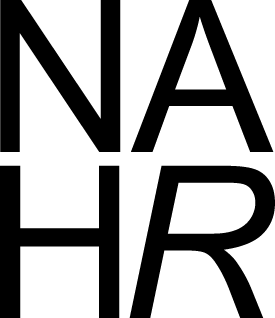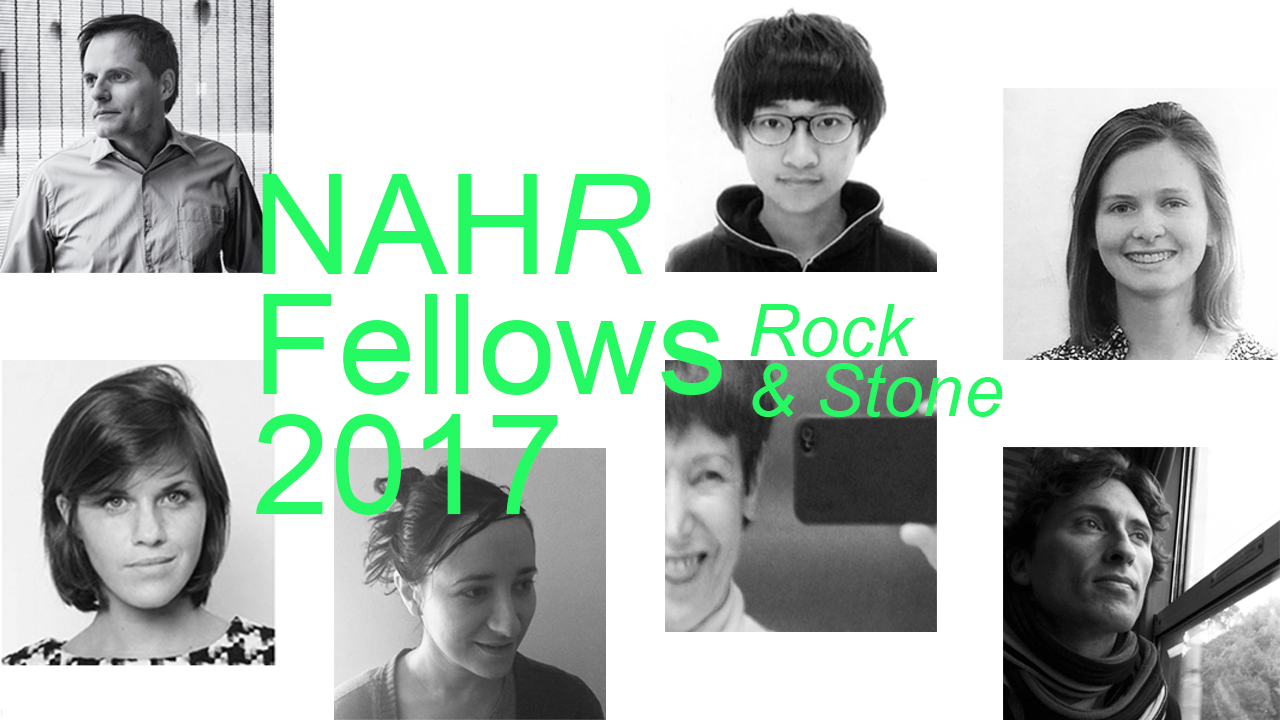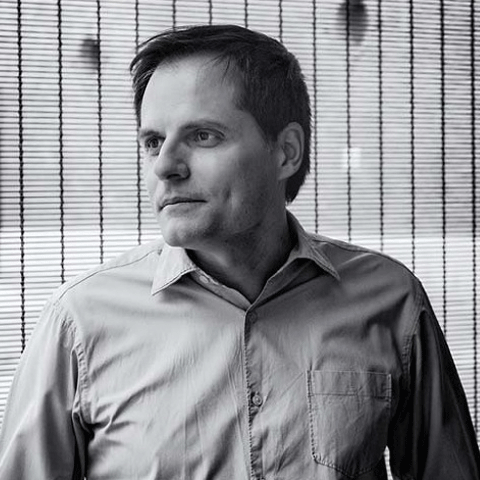
Juan Barte
Madrid, Spain
The Land is Good. Bio-Inspired Photography in the Taleggio Valley
This work explores the gap between images and objects, bridging this gap through a bio-inspired process that results in a perfect symbiosis between the natural constituents of the photography subjects and the actual photographs. The resulting photographs go beyond representation and metaphor merging culture and nature. To this end the darkroom process is polluted with the very essences of the Taleggio Valley: its water, soil, stones, bacteria... In this process the images are revealed through chance, noise and non-programed events. The result are photographs not consciously expected. They are at once serial and singular, have a mechanic look, but are done manually, each of them unique and unrepeatable.
Juan Barte born and raised in Spain had a diverse career that led him to live in places like Los Angeles, Tokyo, Laos, or Madrid. He worked as graphic designer for companies such as The Walt Disney Company. However, photography was always been one of his main fields of interest, so in 2012 he decided to devote himself fully to this “obsession.” Barte’s work has been widely published in specialized media and exhibited in both galleries and public institutions. He is also coordinator of Photobook Club Madrid, actively promoting photography culture through different events.
Madrid, Spain
The Land is Good. Bio-Inspired Photography in the Taleggio Valley
This work explores the gap between images and objects, bridging this gap through a bio-inspired process that results in a perfect symbiosis between the natural constituents of the photography subjects and the actual photographs. The resulting photographs go beyond representation and metaphor merging culture and nature. To this end the darkroom process is polluted with the very essences of the Taleggio Valley: its water, soil, stones, bacteria... In this process the images are revealed through chance, noise and non-programed events. The result are photographs not consciously expected. They are at once serial and singular, have a mechanic look, but are done manually, each of them unique and unrepeatable.
Juan Barte born and raised in Spain had a diverse career that led him to live in places like Los Angeles, Tokyo, Laos, or Madrid. He worked as graphic designer for companies such as The Walt Disney Company. However, photography was always been one of his main fields of interest, so in 2012 he decided to devote himself fully to this “obsession.” Barte’s work has been widely published in specialized media and exhibited in both galleries and public institutions. He is also coordinator of Photobook Club Madrid, actively promoting photography culture through different events.
Il terreno e’ buono. Fotografia Bio-Ispirata in Val Taleggio Il lavoro esplora il divario tra immagini e oggetti, colmando questa lacuna attraverso un processo bio-ispirato che si traduce in una perfetta simbiosi tra le componenti naturali dei soggetti della fotografia e le fotografie reali. Le fotografie che ne derivano vanno oltre la rappresentazione e la metafora fondendo cultura e natura.
Con quest’obiettivo il processo della camera oscura è contaminato con l'essenza stessa della Val Taleggio: l'acqua, il suolo, le pietre, i batteri... In questo processo le immagini vengono rivelate attraverso eventi, rumori e eventi non programmati. Il risultato è dato da fotografie “non-consapevoli”, seriali e singolari al contempo: esse hanno un aspetto meccanico, ma sono sviluppate manualmente, ognuna di esse unica e irripetibile.
Juan Barte nato e cresciuto in Spagna ha avuto una carriera variegata che lo ha portato a vivere in luoghi come Los Angeles, Tokyo, Laos o Madrid. Ha lavorato come grafico per aziende come The Walt Disney Company. Tuttavia, la fotografia è sempre stata uno dei suoi principali campi di interesse, per cui nel 2012 ha deciso di dedicarsi pienamente a questa "ossessione." Il suo lavoro è stato ampiamente pubblicato in riviste di settore ed esposte in gallerie private e pubbliche. È anche coordinatore di Photobook Club Madrid, che promuove attivamente la cultura della fotografia attraverso diversi eventi.

Ana Catalina Gubandru
Bucharest, Romania
Mysterious object, on hard
She will research the presence of the body within the rock and stone environment, the magical potential of the rocks and stones and its correspondence within humans and the human body. She will make performative interventions in the nature using body, rock and stone. The outcome will be the performance and the photo-video documentation of the process.
Ana Catalina Gubandru is an independent choreographer and performer, born and based in Bucharest, Romania.
She works with various concepts and media, performance, performing and body expressivity and
endeavors, written and improvised text, sound, interviews, photography, film, participatory art, reused handmade objects, making special, drawings, installations.
Bucharest, Romania
Mysterious object, on hard
She will research the presence of the body within the rock and stone environment, the magical potential of the rocks and stones and its correspondence within humans and the human body. She will make performative interventions in the nature using body, rock and stone. The outcome will be the performance and the photo-video documentation of the process.
Ana Catalina Gubandru is an independent choreographer and performer, born and based in Bucharest, Romania.
She works with various concepts and media, performance, performing and body expressivity and
endeavors, written and improvised text, sound, interviews, photography, film, participatory art, reused handmade objects, making special, drawings, installations.
Oggetto misterioso, duro
Il progetto esamina la presenza del corpo nell'ambiente roccioso e nella pietra, rivelando il potenziale magico delle rocce e delle pietre e la sua corrispondenza nell'uomo e, più in particolare, nel corpo umano attraverso una performance del corpo in natura, tra roccie e pietre. la restituzione del progetto è data dalla performance stessa con la documentazione fotografica e videografica del processo in corso.
Ana Catalina Gubandru è coreografa e performer indipendente, nata a Bucarest, in Romania, dove vive. Lavora con diversi concetti e strumenti, performance e espressività del corpo, testi scritti e improvvisati, suoni, interviste, fotografie, film, happening d’arte partecipativa, oggetti riutilizzati, processi speciali, disegni, installazioni.
 One of the great things about the nahr residency is that you’re living it and part of your responsibility as a resident there is to just spend time in nature…and learn the ecosystems that are part of that area. To be given that freedom really changes the way you think as an artist, as an intellectual, as a person. Obviously that’s one of the greatest things that a residency has in general, is time and space. But I think time and space with a directive, and then the means…to really indulge in thinking about the world slightly differently, is a beautiful thing about NAHR, and especially about Val Taleggio…
One of the great things about the nahr residency is that you’re living it and part of your responsibility as a resident there is to just spend time in nature…and learn the ecosystems that are part of that area. To be given that freedom really changes the way you think as an artist, as an intellectual, as a person. Obviously that’s one of the greatest things that a residency has in general, is time and space. But I think time and space with a directive, and then the means…to really indulge in thinking about the world slightly differently, is a beautiful thing about NAHR, and especially about Val Taleggio… Reference:
Joshua Stein (2020, 13 August 2020) NAH_Stories/Interviewer: Katie de Bari. NAH_Stories, Nature, Art & Habitat Residency.
Joshua G. Stein
Los Angeles, CA USA
Stone Scan Specimens: A Hybrid Language of Extraction and Assembly
Stone Scan Specimens is a taxonomy of the stone patterns generated by the various strategies of extraction and construction in the Val Brembana region. These 3D digital scans (created through photogrammetry technology) document a long history of human interface with the natural and geological surroundings. Although vernacular assemblies (baite huts, masonry walls of the mulattiere, piöde roofs, and stone churches) are an important part of the area’s cultural and physical patrimony, the sites of extraction that provided their materials are equally a part of the legacy of human invention and impact.
Joshua G. Stein is the founder Radical Craft, a Los Angeles-based studio that advances design saturated in history (from archaeology to craft) that inflects the production of contemporary urban spaces and artifacts. He is the co-director of the Data Clay Network, Professor of Architecture at Woodbury University, and was a 2010-11 Rome Prize Fellow in Architecture.
Los Angeles, CA USA
Stone Scan Specimens: A Hybrid Language of Extraction and Assembly
Stone Scan Specimens is a taxonomy of the stone patterns generated by the various strategies of extraction and construction in the Val Brembana region. These 3D digital scans (created through photogrammetry technology) document a long history of human interface with the natural and geological surroundings. Although vernacular assemblies (baite huts, masonry walls of the mulattiere, piöde roofs, and stone churches) are an important part of the area’s cultural and physical patrimony, the sites of extraction that provided their materials are equally a part of the legacy of human invention and impact.
Joshua G. Stein is the founder Radical Craft, a Los Angeles-based studio that advances design saturated in history (from archaeology to craft) that inflects the production of contemporary urban spaces and artifacts. He is the co-director of the Data Clay Network, Professor of Architecture at Woodbury University, and was a 2010-11 Rome Prize Fellow in Architecture.
Stone Scan Specimens: Un Linguaggio Ibrido tra Estrazione e Assemblaggio
Stone Scan Specimens è una tassonomia dei modelli di pietra generati dalle varie strategie di estrazione e costruzione nella regione di Val Brembana. Queste scansioni digitali 3D (creati attraverso la tecnologia di fotogrammetria) documentano una lunga storia di interfaccia umana con l'ambiente naturale e geologico. Sebbene gli assetti vernacolari (baite, pareti in muratura dei mulattieri, tetti di piöde e pietrisco) rappresentino una parte importante del patrimonio culturale e fisico della zona, i siti di estrazione che forniscono i loro materiali sono altrettanto rappresentativi dell'impatto, eredità e invenzione umana.
Joshua G. Stein è il fondatore Radical Craft, uno studio di Los Angeles che fonda la propria progettazione nella storia densa, intensa, satura di elementi informativi - dall'archeologia all'arte) per la produzione di oggetti e spazi urbani contemporanei. E' co-direttore della Data Clay Network, nonché professore nella facoltà di Architettura all'Università di Woodbury in California.Ha vinto il Rome Prize di 2010-11 in Architettura.
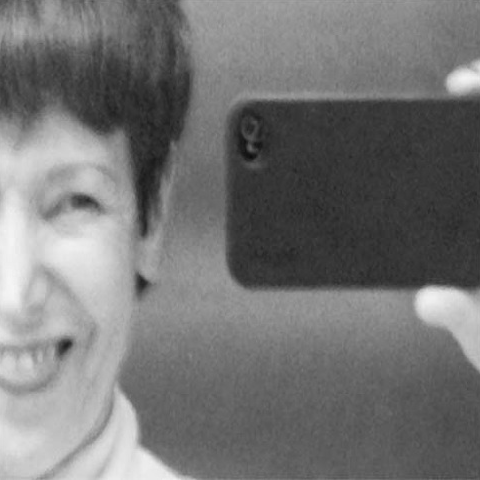
April Greiman
Los Angeles, CA USA
Seeing is a Way of Thinking, Thinking a Way of Seeing This photography project explores the relationship of nature as recorded, analyzed and enhanced through digital technology, and probes more deeply through scale change. Of particular interest is the discovery and capture of 'hidden' information- for example, subtle color palettes, not easily seen with the naked eye, at actual scale or in the natural light condition.The reduced size of the natural material allows for a compressed visual product of color palette, both real, and in combination with the texture of technology.
April Greiman is a thinker and artist, whose works include various trans-media projects, innovative technology combined with an exploratory hybrid-based approach. Explorations of image, word and color as objects in time and space are grounded in a singular fusion of art and technology. Her body of work is varied in media, scale and application with a common purpose to augment the imagination and amplify the core values expressing one's perceptions before nature.
Los Angeles, CA USA
Seeing is a Way of Thinking, Thinking a Way of Seeing This photography project explores the relationship of nature as recorded, analyzed and enhanced through digital technology, and probes more deeply through scale change. Of particular interest is the discovery and capture of 'hidden' information- for example, subtle color palettes, not easily seen with the naked eye, at actual scale or in the natural light condition.The reduced size of the natural material allows for a compressed visual product of color palette, both real, and in combination with the texture of technology.
April Greiman is a thinker and artist, whose works include various trans-media projects, innovative technology combined with an exploratory hybrid-based approach. Explorations of image, word and color as objects in time and space are grounded in a singular fusion of art and technology. Her body of work is varied in media, scale and application with a common purpose to augment the imagination and amplify the core values expressing one's perceptions before nature.
Vedere è un modo di pensare, pensare è un modo di vedere Il progetto fotografico esplora la relazione con la natura registrata, analizzata e potenziata attraverso lo strumento digitale che grazie al cambiamento di scala permette di sondare/scavare maggiormente in profondità. Di particolare interesse è la scoperta e la rivelazione di informazioni "nascoste," come ad esempio, la sottile palette di colori, poco visibili a occhio nudo, a scala reale o in condizioni di luce naturale.
La dimensione ingrandita del materiale naturale consente un effetto visivo della tavolozza dei colori in forma compressa, sia esso reale che combinato con la texture/griglia/trama digitale/della tecnologia.
April Greiman è artista, le cui opere comprendono vari progetti trans-media, che combinano tecnologie innovative con un approccio ibrido esplorativo. Esplorazioni trasversali di immagini, parole e colori come oggetti nel tempo e nello spaziotrovano fondate nella singolare fusione di arte e tecnologia. Il suo lavoro è variato nei mezzi, nella scala e nell'applicazione, con lo scopo di aumentare l’ immaginazione e ampliare lo spettro delle nostre percezioni in nautra.
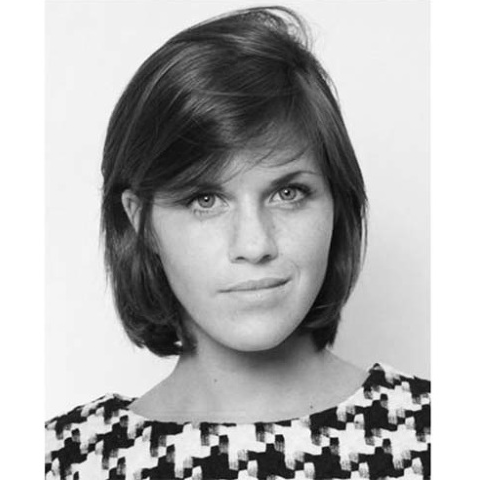
Giulia Pellegrini
Milan, Italy
The Stone Alive
Stone becomes the subject of a series of actions that open up a reflection not only on rural culture that for a long time has characterized the territory and human settlements of Val Taleggio but also its physical and geological characteristics, Focusing attention on his "word", his "skin", and his "memory". A story, told through different steps, that brings the spectator to think of this material as a living, dynamic, inert, and immobile. The project looks at rock as a vital element that interacts with human culture in craftsmanship.
Giulia Pellegrini (1990). After two years of Pharmacy at the University of Pavia, she graduated (with honour) in Painting, Visual Arts, and Curatorial Studies at Naba, Nuova Accademia di Belle Arti in Milan. Giulia is attracted to the chromatic, dimensional, organic aspect of the individual elements which characterize the environment around her. She classifies, selects, studies each element to focus her attention on the transformation which happens in each environment, system, body and energy within matter. Transformation and energy, along with the idea of time which is identified in her works with the concept of duration, are the subjects of her works.
Milan, Italy
The Stone Alive
Stone becomes the subject of a series of actions that open up a reflection not only on rural culture that for a long time has characterized the territory and human settlements of Val Taleggio but also its physical and geological characteristics, Focusing attention on his "word", his "skin", and his "memory". A story, told through different steps, that brings the spectator to think of this material as a living, dynamic, inert, and immobile. The project looks at rock as a vital element that interacts with human culture in craftsmanship.
Giulia Pellegrini (1990). After two years of Pharmacy at the University of Pavia, she graduated (with honour) in Painting, Visual Arts, and Curatorial Studies at Naba, Nuova Accademia di Belle Arti in Milan. Giulia is attracted to the chromatic, dimensional, organic aspect of the individual elements which characterize the environment around her. She classifies, selects, studies each element to focus her attention on the transformation which happens in each environment, system, body and energy within matter. Transformation and energy, along with the idea of time which is identified in her works with the concept of duration, are the subjects of her works.
La Pietra Viva
La pietra è il soggetto di una serie di “azioni” che aprono una riflessione non solo sulla cultura rurale caratterizzante il territorio e gli insediamenti umani della Val Taleggio, ma anche sulla sua cultura materiale, fisica e geologica, focalizzando l’attenzione sulla sua “parola,” sulla sua “pelle” e sulla sua “memoria”. Una storia, raccontata attraverso differenti step, in grado di portare lo spettatore a pensare a questo materiale come a un qualcosa di vivo e dinamico, e non inerte ed immobile! Il progetto guarda alla roccia come ad un elemento dotato di vitalità che interagisce con la cultura delle pratiche artigianali.
Giulia Pellegrini (1990). Dopo due anni di Farmacia presso l'Università di Pavia, si è laureata in Pittura, Arti visive e Studi Curatoriali presso Naba, la Nuova Accademia di Belle Arti di Milano,lavora sull’ aspetto cromatico, dimensionale e organico dei singoli elementi che caratterizzano l'ambiente. Il suo progetto classifica, seleziona, studia ogni elemento per concentrare l’attenzione sul processo di trasformazione che avviene in ogni ambiente, sistema, corpo. La trasformazione e l'energia all'interno della materia, insieme all'idea del tempo che si identifica nel concetto di durata, sono i soggetti delle sue opere.

It was really amazing to get to be in a very special and beautiful environment but also to meet the fellows in my cohort from around the world and share the experience with people I never would have met otherwise…
For me my experience at NAHR is part of an arc. I don’t totally know how it fits into who I am or what I am studying now, but…the ability to observe [certain] elements in Sottochiesa has a big influence on how I see…other elements around the world.
Reference:
Ruedesueli, R. (2020, 24 August 2020) NAH_Stories/Interviewer: Katie de Bari. NAH_Stories, Nature, Art & Habitat Residency.
Greta Ruedisueli
Boston, MA USA
Stone in the Landscape: Cycles of Materiality
The form and composition of stone evolve as the material undergoes processes of extraction, implementation, and degradation by exposure to natural and human forces. The intentional and accidental placement of rock and stone creates a framework for the movement of plants. From the moss-covered boulder to the agricultural drywall, human experience in the landscape shifts with the presence of erosion and vegetation. By analyzing the dynamic behaviors of vegetation across rock, living systems serve not only as an aesthetic and experiential design tool, but also as a structural element to help sustain architectural and landscape design.
Greta Ruedisueli explores the way people experience space and perceive environments through the hand and the eye. Fascinated by all scales of design, she considers buildings, infrastructure, landscapes, and human interactions as one continuous fabric. With a Bachelor's of Science in Architecture, Greta is currently pursuing a Masters in Landscape Architecture at the Harvard Graduate School of Design.
Boston, MA USA
Stone in the Landscape: Cycles of Materiality
The form and composition of stone evolve as the material undergoes processes of extraction, implementation, and degradation by exposure to natural and human forces. The intentional and accidental placement of rock and stone creates a framework for the movement of plants. From the moss-covered boulder to the agricultural drywall, human experience in the landscape shifts with the presence of erosion and vegetation. By analyzing the dynamic behaviors of vegetation across rock, living systems serve not only as an aesthetic and experiential design tool, but also as a structural element to help sustain architectural and landscape design.
Greta Ruedisueli explores the way people experience space and perceive environments through the hand and the eye. Fascinated by all scales of design, she considers buildings, infrastructure, landscapes, and human interactions as one continuous fabric. With a Bachelor's of Science in Architecture, Greta is currently pursuing a Masters in Landscape Architecture at the Harvard Graduate School of Design.
Pietra nel Paesaggio: Cicli di Materialità La forma e la composizione della pietra evolvono in quanto il materiale subisce nel tempo processi di estrazione, utilizzo e degradazione per diretta esposizione alle forze naturali e umane. Il posizionamento intenzionale e accidentale di roccia e pietra crea il supporto per la crescita della vegetazione. Dal masso coperto di muschio al muro a secco di sostegno, l'esperienza umana nel paesaggio cambia con la presenza di erosione e vegetazione. Lo studio e la ricerca dei comportamenti dinamici della vegetazione sulla roccia, permettono di evidenziare come i sistemi viventi appaiono non solo come elemento strutturale ma anche come sperimentale/esperienziale strumento di progettazione estetica, operazione che aiuta a sviluppare il progetto architettonico e paesaggistico.
Greta Ruedisueli esplora il modo in cui le persone sperimentano lo spazio e percepiscono gli ambienti attraverso la mano e gli occhi. Affascinata da tutte le scale di progettazione, considera i paesaggi, le infrastrutture, gli edifici, e infine le interazioni umane come un tessuto continuo. Laureata in Architettura, sta svolgendo un Master in Architettura del Paesaggio presso la Harvard Graduate School of Design.
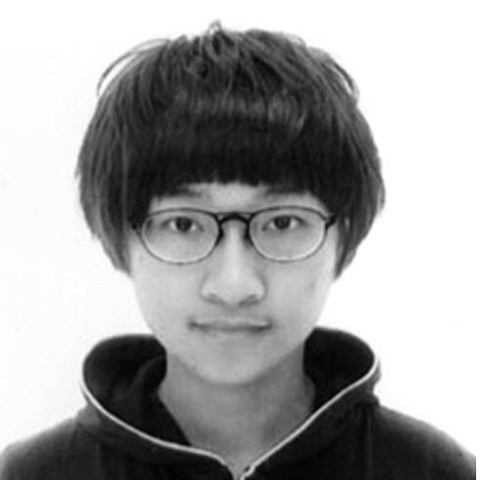 The work I did at NAHR is a turning point of my personal work; before I did that, I did a lot of animation film about nature but they are more like protestors . . . but after I finish [NAHR], I realised inside is more important than outside, so we don’t always need to be loud... the nature is already perfect.
The work I did at NAHR is a turning point of my personal work; before I did that, I did a lot of animation film about nature but they are more like protestors . . . but after I finish [NAHR], I realised inside is more important than outside, so we don’t always need to be loud... the nature is already perfect. (Ho-Ting Wei, August 5th, 2020, NAH_Stories.
Reference: Wei, H.-T. (2020, 5 August 2020) NAH_Stories: Ho-Ting Wei/Interviewer: L. Coleman. NAH_Stories, Nature, Art & Habitat Residency.
Ho Ting Wei
Taipei, Taiwan
Who's-Tone
“Who’s-Tone” is a short animation. The story is about an unusual conversation between the character and different rocks. The character believes stones are empathetic and can feel and heal her. This project aims to explore the spiritual relationship between stone and human, and from which the artist's wounded heart is healed through the experience. The work hopes to present the power of healing of Mother Nature.
Ho-Ting Wei is an animation filmmaker and multidisciplinary artist based in Taiwan. Her work attempts to attract people to embrace tough environmental or social issues by using interesting artistic ways. She holds a MFA in Animation and Film Art from Tainan National University of the Arts.
Taipei, Taiwan
Who's-Tone
“Who’s-Tone” is a short animation. The story is about an unusual conversation between the character and different rocks. The character believes stones are empathetic and can feel and heal her. This project aims to explore the spiritual relationship between stone and human, and from which the artist's wounded heart is healed through the experience. The work hopes to present the power of healing of Mother Nature.
Ho-Ting Wei is an animation filmmaker and multidisciplinary artist based in Taiwan. Her work attempts to attract people to embrace tough environmental or social issues by using interesting artistic ways. She holds a MFA in Animation and Film Art from Tainan National University of the Arts.
Chi e’ Pie(t)ra Chi è Pie(t)ra è un cortometraggio animato. È la storia di una conversazione insolita tra un personaggio femminile e diverse pietre. Il personaggio crede che le pietre siano empatiche e possano sentirla e guarirla. Questo progetto mira ad esplorare il rapporto spirituale tra l’elemento pietra e l’umano, dove il cuore ferito dell'artista guarisce attraverso l'esperienza. Il lavoro mira a presentare la potenza guaritrice di Madre Natura.
Ho-Ting Wei è filmmaker d’animazione e artista multidisciplinare; vive a Taiwan. Il suo approccio minuto con espedienti artisitici particolari intende coinvolgere le persone ad abbracciare temi ambientali o sociali. Ha ottenuto un Master of Fine Arts in Animazione e Film Art all'Università Nazionale delle Arti di Tainan.
2017 Alt. Residents
Katy Bradford / USASimon Eales, Eco-Poet & Researcher / Melbourne, Australia & Buffalo, NY, USA
Anne Elvey, Eco-Poet, Melbourne, Australia
Jennifer Jenkins, Sculptor / Hamburg, Germany
Sofia Malone, Painter / Stockholm, Sweden
Kwangwoo Kim, Installation & Performing Artist / Gyeonggi do, South Korea
Helena Wadsley, Artist / Vancouver, Canada
Sara Palmieri, Photographer / Roma, Italy
I suppose it's probably affirmed something about the complexity of people, place and the possibilities of melding also the visual with text...but it was just really interesting to be in a very different place, and, I mean, I just fell in love with Italy.
Reference: Anne Elvey, August 12th, 2020, NAH_Stories/Interviewer: L. Coleman. NAH_Stories, Nature, Art & Habitat Residency
The prompt to think about ‘Rock and Stone’ has really shaped my academic and creative practice in the three years since...can we sit in the face of something we don’t understand and just let ourselves create meaning from that – or not at all: just experience it?
Reference: Simon Eales, August 19th, 2020, NAH_Stories/Interviewer: L. Coleman. NAH_Stories, Nature, Art & Habitat Residency
Most of the time I was by myself in my research, and that was a great experience…there is no possibility to create a real habitat for humans in the future if we don’t really relate to nature and where we come from…We started from there…so today we have to absolutely restart in a way, and rethink this relationship. It’s a relationship. It’s all about this. Reference: Sara Palmieri, August 21st, 2020, NAH_Stories/Interviewer: Katie de Bari. NAH_Stories, Nature, Art & Habitat Residency.
2017 Visitors
Paolo Belloni, Architect / Bergamo, ItalyEnrico Borghi, Politician, UNCEM / Vogogna, Italy
Mauro Bugada, Architect / Sant’Omobono Terme, Bg, Italy
Stefania Cabassi, Geologist / Piazza Brembana, Bg, Italy
Antonio Carminati, Centro Studi Val Imagna / Val Imagna Italy
Gloria Cornolti, Prov. Bg / Bergamo, Italy
Davide Crippa, Architect / Milano, Italy
Gianmarco Orlandi, Geologist / Ranica, Bg, Italy
Francesco Garofalo, Landscape Architect / Rotterdam, The Netherlands
Jacopo Gennari Feslikenian, Photographer / Rotterdam, The Netherlands
Anna Giorgi, Botanist, UNIMONT / Milano, Italy
Alice Guarisco, Architect / Brescia, Italy
Pietro Invernizzi, Scalpellino / Val Imagna, Italy
Maurizio Ori, Landscape Architect / Cremona, CR, Italy
Luigino Pirola, Landscape Architect / Bonate Sopra, BG, Italy
Tiziana Scaciga, Recycled Stones / Domodossola, Italy
Enrico Scaramellini, Architect / Madesimo, SO, Italy
Jennifer Scappettone, Eco-Poet / Chicago, IL, USA
Asli Suner, Architect / Istanbul, Turkey
Paolo Valoti CAI / Grassobbio, BG, Italy
Matteo Zanga, Photographer / Val Seriana, Bg, Italy
